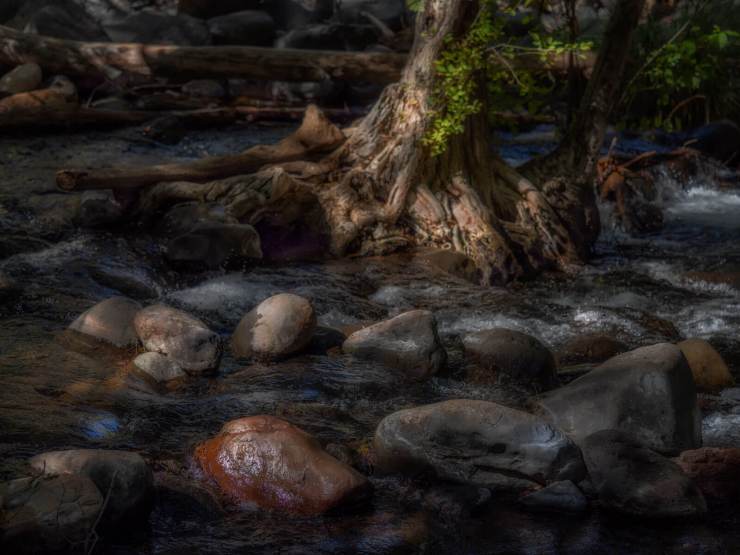OM System Micro Four Thirds cameras feature multiple computational modes to add to your creativity. One of them is ND filters. Here’s how to use them and see the results.
Scouting
I was exploring Oak Creek in Sedona, Arizona to see how the color of the leaves was changing. Not so much yet. Rather than wait the probably necessary couple of weeks, I decided to do some experimentation with my OM-1 camera (this link is to MPB, with used prices from $420 to $1,060). Hiking along the creek, I passed by looking for compositions. I found some nice ones, but felt a little more creativity was needed.

Neutral density filter
What I needed was a little slowing down for the water to have a somewhat silky feel, blending color and shape into a nicer look. I didn’t have ND filters on hand and the water didn’t flow quickly. It was frozen even at the slowest shutter speed and lowest ISO.
Enter the camera’s built-in ND filter settings. With the OM-1 you can simulate the look of the ND filter by capturing multiple exposures. The camera processes them. Anything that doesn’t move stays the same during each subsequent capture. The water, because it is moving, is rendered multiple times and is mixed together.

You can choose between 6 EVs from ND 2 to ND 64. In this case, since the sun was shining brightly, I used ND 64 for all the images in this article. A note on usage: The camera must be in Manual or Shutter Priority mode for this to work. I know I spent a few minutes trying to find out why it won’t work in Aperture Priority!
On the latest OM-1 Mark II camera, an additional ND stop is available, ND 128 (at the time of writing I see some pretty interesting deals on the Mark II).
Composition
When I photograph the stream, I look for interesting combinations of rocks, boulders, tree branches and logs. I’m trying to move the viewer’s eye around the image. A tip for when you’re working: don’t forget that there are small movements in direction, focal length and orientation that make your images totally different from each other.

Start playing and exploring a scene from different angles. Tilt the camera. Change the aperture and shutter speed. You never know what you’ll find if you slow down. See and explore long before you even bring the camera close to your eyes. Once you find something that catches your attention, settle in for a while. You will find more than you think is possible.
A zoom lens is useful for playing with shrinkage or letting space work in your photo. For all images in this article, the OM System M.Zukio 40-150mm f/2.8 pro lens. The field of view is equivalent to 80-300mm on a full frame sensor.
“Dodging and burning are steps to make up for the mistakes God has made in establishing tonal relationships.” –Ansel Adams
Postproduction
Don’t forget post production to enhance what you captured on the sensor. As Ansel Adams suggested, dodging and burning are used to make the tones appear correct. You can create extra depth and dimension. You can draw attention to some things and distract it from others. Sharpening and blurring can also help. Sharper areas will draw attention and softer areas will be explored later. Use it to move the viewer’s eye around the image.
Yours in Creative Photography,
Bob
#neutral #density #filter #built #camera